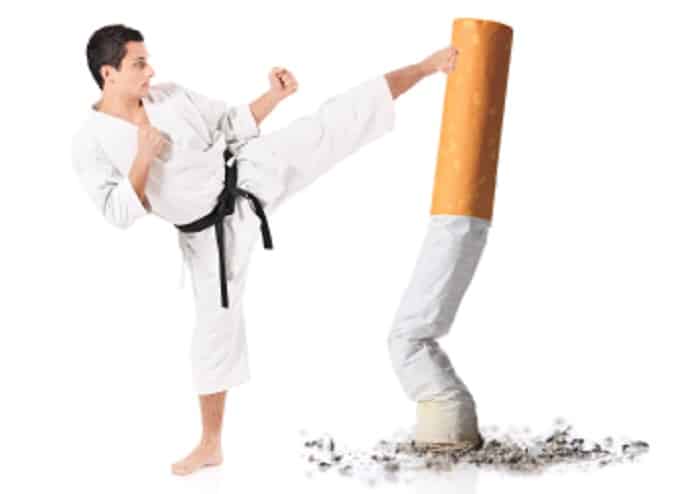My partner (and husband), Charlie, is known as the smoking at the treatment center where he works. This isn’t a new role for him. We are evangelical non-smokers. And, for good reason!
There is a gazebo behind one of the residential houses were clients live while they’re in the program. It was affectionately known as the butt hut. This social gathering place had become part of the problem rather than a respite from it.

When you’re in early recovery, the unsettled feeling that is experienced seeks comfort any way it can find it. And, since the tried and true primary addiction is no longer available, turning to another seemingly less bad habit is pretty common. There were people coming into treatment as non-smokers and leaving as smokers simply as a way to stop the immediate discomfort.
We said simply unacceptable! Trading one addiction for another is known as cross-addiction. It’s still addiction.
Recovery can be quick, easy and even fun. Trading one addiction for another makes the recovery process long and difficult.
You get rid of one problem only to realize that you’ve developed a new one. If you turn to another bad habit as a coping mechanism for eliminating any addiction problem, you’re just prolonging the agony. Eventually, if you want to truly experience recovery, you’ll need to eliminate all addictions.
Why not start there?!
So, let’s explore a few of the myths about smoking and addiction recovery.
Myth 1 – It will be next to impossible to stay sober if you try to quit smoking at the same time that you are eliminating your primary addiction.
Reality – While it might feel a bit more intense for the first few days, your chances of maintaining sobriety go up dramatically if you eliminate smoking (and any nicotine) simultaneously. When someone comes into the treatment center and needs a supervised period of detox (typically related to narcotics), it takes 3 to 10 days. So, as you can see once you get through the first week or so, the physical cravings experienced in early recovery will be, for the most part, behind you.
It’s important to point out that recovery from addiction involves much more than finding your way to sobriety. Something was driving your addictive behavior and that must be addressed to experience the peace that recovery promises.
Myth 2 – Smoking is a healthier alternative (compared to the primary addiction).
Reality – I can understand why a heroin addict would think that smoking is not much of a problem. For the reasons discussed here, nothing could be further from the truth. The long-term damage caused by smoking creates our worst nightmare, a slow painful death.
It’s fascinating to observe how people have adjusted their lives to continue their smoking habit. For the most part, people won’t smoke in their home or car. They know that it doesn’t take long to develop a stench that won’t go away. Somehow, these same people have found a way to justify putting a concentrated dose of the toxins into their body. Mind boggling!
Myth 3 – It will be easier to stop the primary addiction now and wait until the urge to use subsides to stop smoking.
Reality – Any addiction (substance or behavior) alters the way your brain works. This is a fact proven by countless addiction studies.
Rather than feeling stronger, it is quite possible that you will increase your use of a secondary addiction to cope with the effects of eliminating your primary addiction. Your brain will not be healing. Rather, you’ll be training your brain to find other ways to maintain the dysfunctional reward system that has been developed over the years of turning to your addictive substance or behavior for relief.
Smoking is one of the most common ways that addicts mitigate the early discomfort of recovery. But, it is certainly not the only way!
For example, alcoholics may turn to consuming much more sugar. Cookies, cake, ice cream they can’t get enough. The sugar is having the same effect on the brain that the alcohol did. And, once the recovering alcoholic starts to see their waistline expanding, they often think they can go back to drinking (in moderation) and solve the new problem.
Unfortunately, it doesn’t work that way. Relapse can be tragic, even deadly.
So, remember the butt hut? Well, it has now been reclaimed as a smoke-free relaxation environment. While clients can still smoke at the treatment facility, it’s not quite as comfortable and is not part of the social interaction. For clients who want to quit smoking (and more importantly for clients who were not smokers when they arrived), it’s much easier to steer clear of it.
When you’re trying to make any change, it’s helpful to remove the temptation. You wouldn’t go on a diet and make a batch of homemade chocolate chip cookies to test your resolve!
Have you ever been a smoker or addicted to nicotine? What are your thoughts about stopping all addictions at the same time?
